TheOneTAR
gamer level 2
595 xp
595 xp
followers
5
5
Use my invite URL to register (this will give me kudos)
https://boardgaming.com/register/?invited_by=theonetar
profile badges
recent achievements

Arrowhead
Explore select games by completing a series of exploration actions. learn more »
Explore select games by completing a series of exploration actions. learn more »

Private eye
Follow a total of 10 games
Follow a total of 10 games

My First Wish!
Add a game to your Wish List by clicking the "Want It" button on a game page.
Add a game to your Wish List by clicking the "Want It" button on a game page.

Reviewed My First Game
Submit a game review
Submit a game review
Player Stats
Critic (lvl 1)
120 xp
120 xp
Explorer (lvl 1)
222 xp
222 xp
Professor (lvl 0)
45 xp
45 xp
Reporter (lvl 0)
20 xp
20 xp




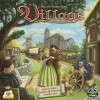




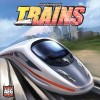

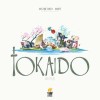

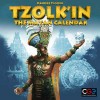
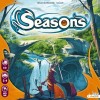









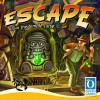

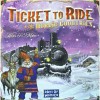

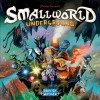
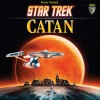








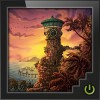
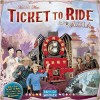
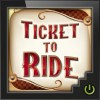
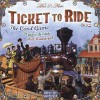
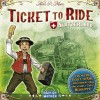
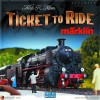


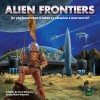


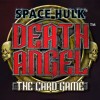

Agricola: All Creatures Big and Small
Agricola: All Creatures Big and Small is a delightful little Worker-Placement game with the theme of animal husbandry. You read that right, the theme is to raise and breed animals, on a farm. It’s farming, with animals. That’s very addictive. I can tell you’re hooked already.
This game is more than just a pretty theme, though. It’s also a fantastic introduction to Worker-Placement board games.
In Agricola: All Creatures Big and Small, the goal is to develop your small, 6 acre property into a profitable farm by the end of eight rounds. Each round you and your opponent take turns placing your three workers on available actions on the center board. Each spot on the board can only be taken by one worker, and grants a unique action to the worker’s player for that turn. These actions may do things like give the player basic resources, grant them new livestock, allow them to build a new building, expand their property, or build fences to contain their animals.
The goal of the game is to be the most successful farmer in regards to what livestock you have at the end of the 8th round. Some buildings help count towards your score, and/or give you special abilities. (Pro Tip: The Open Stables upgrade is the most useful Special Building for most strategies.) Each building costs a different amount of resources, so what you can build depends on what you’ve been able to accumulate earlier in the game. There are five actions that can be selected to take just basic resources, each one giving a different amount. Four of these restock every round, regardless of whether they’ve been claimed or not. The livestock pastures also restock every round, but what is added depends on the state of the pasture.
For example, one pasture action starts with a cow, but for every round the cow isn’t taken, a pig is added to her field. When a player places a worker in this pasture, they’ll get all the animals there. At the end of the round where the field has been emptied, a new cow is placed in the pasture. (Pro Tip: Try and hold off on selecting a pasture until there’s at least one other animal in it. If you can get a pair of a single type, that’s best.)
When you take animals, you need some place to put them. You can’t just throw them into your huge tracts of land. They’ll wander off. You have to build fences or have room in buildings to house them. There are two actions that allow you to build fences around your fields, which allows you to keep two animals of the same type per field. If you build a feeding trough in a field or building, that doubles the amount of animals you can keep there. Animals of different types can’t share space in buildings or fields, so you need to build multiple areas to house them. (Pro Tip: The sides of buildings count as fence edges. Try to plan your fields around using this feature to save your limited amount of fences.)
If you have two or more animals of the same type housed together, at the end of the round they’ll breed and produce another one of the same type. You can only get one baby animal of each type per round, so don’t think that this will escalate quickly. Also, if you don’t have a place to house the new spawn, back to the supply pile it goes.
“Okay,” you say. “This is… easy. I’ll just always make sure I go first and then I’ll always be able to get the best actions, breed the most animals, and just generally be awesome.” Nope! Here’s a monkey wrench to that little plan: One of the available resource actions allows a player to take the Starting Player Token. This is a common action available in Worker-Placement games, and it generally comes with an additional benefit. For this game, the player also gets any wood that has accrued there, which is one piece every round. This allows the player who started second to steal the glory that is being Player One. This has some pretty big implications, especially if there’s ever a time where you desperately need to make sure you get something before your opponent. Also, this action, like all the others, is available every round. (Pro Tip: Going first isn’t always the boost-up you might think it would be. Fighting over the Starting Player token is never a good strategy.)
Alright, so now that I’ve blown your minds with the basics of the rules, are you ready for the meat of this game? At the end of the game, your score is determined by the worth of your buildings, and by how many of each animal type you have. You also get a bonus according to the scoring chart, based on the total of each animal type you have. Notice that if you have less than three of any type, you lose three points. (Pro Tip: Diversity is key, but not the end all. If you can get a high volume of one type and the minimum of the others, that’ll work just as well.
I know that this is a lot. You were just looking for a good time and here I am, laying down all these action types and breeding rules. It can be overwhelming to take in all at once. But it’s worth it. For serious, it’s worth it. Worker-Placement games are often richly-themed games with mechanics that just make sense after the first turn. Once you learn how to play one, learning new games of the same type is trivial. Learning to master them, not so much. Agricola: All Creatures Big and Small is a fabulous introduction to this world of tiny wooden figures. It has a theme that is universally addictive, you can knock out a game in 30 minutes, and the replayability value is huge. No two games are ever the same.
If you’re looking to dip your toe into a popular Euro-game mechanic, or just looking for a more easily digested strategy game, look no further than Agricola: All Creatures Big and Small.